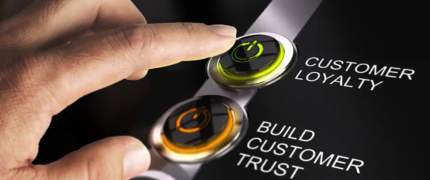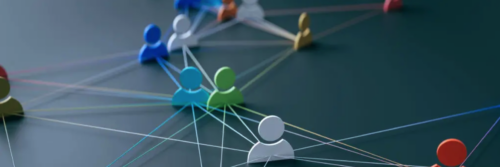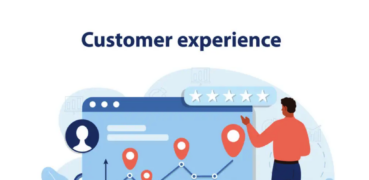The Double Diamond Design Process: How to Guide Innovation with Practical Applications

The Double Diamond design process is a widely-used framework for creative problem-solving that brings structure to developing new products, refining user experiences, and solving complex issues. Developed by the UK Design Council, the Double Diamond is particularly effective because it organizes the design process into distinct phases: discovering the problem, defining it clearly, developing potential solutions, and delivering the final outcome.
By following this framework, designers, product owners, and cross-functional teams can align on goals, collaborate effectively, and consistently create solutions that resonate with end users. Here, we’ll explore each phase of the Double Diamond in detail, along with practical tips for implementing the framework in your work and business.
Understanding the Double Diamond Design Process
The Double Diamond framework visualizes the design process as two consecutive diamonds, each containing two stages:
- Discover – First phase to research and understand the problem.
- Define – Narrowing down insights to clarify the core problem.
- Develop – Ideating and prototyping potential solutions.
- Deliver – Finalizing and implementing the solution.
These stages can be used linearly or revisited as needed, making the Double Diamond a flexible, iterative model that can adapt to different types of projects and teams.
Phase 1: Discover – Gathering Insights
In the Discover phase, the primary goal is to understand the problem space and identify user needs. This phase involves research, empathy exercises, and observation to gather as much relevant information as possible, allowing designers to approach the problem with a fresh perspective.
Practical Applications
- User Research: Conduct user interviews, surveys, and observations to gather qualitative and quantitative data about your audience’s needs, preferences, and pain points.
- Competitive Analysis: Analyze competitor products to understand what solutions already exist and identify gaps in the market. This can provide insight into areas where your product could offer unique value.
- Empathy Mapping: Create empathy maps to document user insights and visualize what users are thinking, feeling, and experiencing. This can help your team get aligned on user perspectives and needs.
By diving deep into user insights and broader market analysis, you can build a strong foundation to define the problem accurately.
Phase 2: Define – Framing the Problem
Once enough data is collected, it’s time to move to the Define phase. Here, the goal is to analyze the information gathered, extract meaningful insights, and clarify the problem statement. This phase is crucial because a well-defined problem enables more targeted ideation and solution development.
Practical Applications
- Problem Statements: Craft a clear, concise problem statement that captures the essence of the issue. For example, “Our users find it challenging to organize project tasks because of the cluttered interface.”
- Personas and User Stories: Develop user personas and write user stories based on the insights from the Discover phase. Personas will represent your target users, and user stories will articulate their needs in actionable terms.
- Journey Mapping: Map out the user journey to visualize the key steps users take and the challenges they encounter. This highlights specific points where the problem is most acute and helps prioritize focus areas.
With a clearly framed problem, teams can brainstorm solutions that directly address the needs and pain points identified, streamlining the next phase of ideation and development.
Phase 3: Develop – Exploring Solutions
In the Develop phase, creativity takes center stage as teams brainstorm, prototype, and iterate on potential solutions. This phase encourages divergent thinking, where ideas are generated without judgment, followed by convergent thinking to evaluate and refine promising solutions.
Practical Applications
- Brainstorming Workshops: Organize brainstorming sessions with cross-functional team members. Encourage free-flowing ideas, and use techniques like mind mapping or “How Might We” questions to spark creativity.
- Prototyping: Start with low-fidelity prototypes (like sketches or wireframes) to test initial ideas quickly. As you refine your solution, move to more detailed prototypes, using tools like Figma or Adobe XD to create clickable models.
- User Testing and Feedback: Regularly test prototypes with real users to gather feedback. This can include A/B testing to see which features or layouts are most intuitive, ensuring the solution evolves based on user input.
By iterating and refining your ideas through feedback loops, your team can ensure that the solution aligns with user expectations before investing heavily in full-scale development.
Phase 4: Deliver – Launching the Solution
The final phase, Deliver, involves polishing the solution based on the feedback from the Develop phase, preparing for launch, and deploying the final product. This stage also includes measuring success and setting up systems for ongoing improvement.
Practical Applications
- Final Testing and Quality Assurance: Conduct thorough testing to ensure the product is free from critical bugs and performs reliably. This includes usability testing to confirm the solution is user-friendly.
- Marketing and Communication Plan: Develop a launch strategy to communicate the new solution to users. This could include an email campaign, social media announcements, and product tutorials.
- Feedback Loops: After launching, set up mechanisms to capture user feedback, such as surveys or a feedback form within the product. Use this data for future enhancements and continuous improvement.
By maintaining strong feedback channels and performance metrics, your team can make data-informed decisions for future iterations, ensuring the product remains aligned with user needs.
Variations of the Double Diamond Process
While the Double Diamond is flexible, it may need customization based on the specifics of your project, team, and timeline. Below are some common variations:
- Agile and Lean Integration: Some teams incorporate Agile and Lean principles, breaking down each phase into sprints. This allows the team to progress iteratively and adjust based on continuous feedback, making it a practical choice for fast-paced environments.
- Rapid Prototyping Variation: For projects that need a quick turnaround, the emphasis shifts to quick iterations in the Develop phase, moving rapidly between prototyping and testing. This reduces time in the Define phase but can still yield valuable insights through continuous testing.
- User-Centric Double Diamond: In this variation, extra emphasis is placed on user involvement in both the Discover and Develop phases. Teams conduct ongoing user testing throughout the entire process, ensuring solutions remain tightly aligned with user expectations.
- Triple Diamond Model: Some organizations use a Triple Diamond model that adds a third diamond for continuous improvement, where ongoing user feedback is incorporated into new versions or features.
Practical Ways to Use the Double Diamond in Your Business
- Kick-Off Workshops with Stakeholders: Start new projects with workshops that align stakeholders and team members on the Double Diamond framework. Discuss project goals and expectations, and map out the initial timeline for each phase. This creates a shared understanding and a clear plan.
- Weekly Check-Ins During Each Phase: Schedule weekly progress reviews to keep the team aligned. These sessions can focus on insights gathered, challenges faced, or solutions brainstormed, fostering transparency and ensuring everyone is on the same page.
- Resource Allocation Based on Phases: Allocate resources strategically depending on the phase. For instance, invest more time in research tools and methods during the Discover phase, and focus on prototyping tools during the Develop phase. This ensures efficient use of resources and budget.
- Internal User Testing: Utilize internal teams to simulate user testing, especially in the Develop phase. Employees can provide valuable feedback from a user perspective while allowing you to refine the product before going to external users.
- Cross-Functional Collaboration: Engage cross-functional teams, including marketing, sales, and support, especially in the Deliver phase. This ensures a cohesive launch strategy and prepares all teams to support the product once it’s live.
Conclusion: Implementing the Double Diamond for Sustainable Success
The Double Diamond design process provides a structured yet flexible framework that helps teams navigate the complexities of problem-solving and product development. By carefully following each phase—discovering insights, defining the problem, developing solutions, and delivering results—teams can consistently create impactful solutions that meet real user needs.
When tailored to suit the specifics of your business or team, the Double Diamond fosters a user-centered approach, which can improve innovation, product success, and customer satisfaction. As a best practice, encourage teams to remain open to feedback, revisit earlier stages as needed, and keep the user at the center of every decision.







